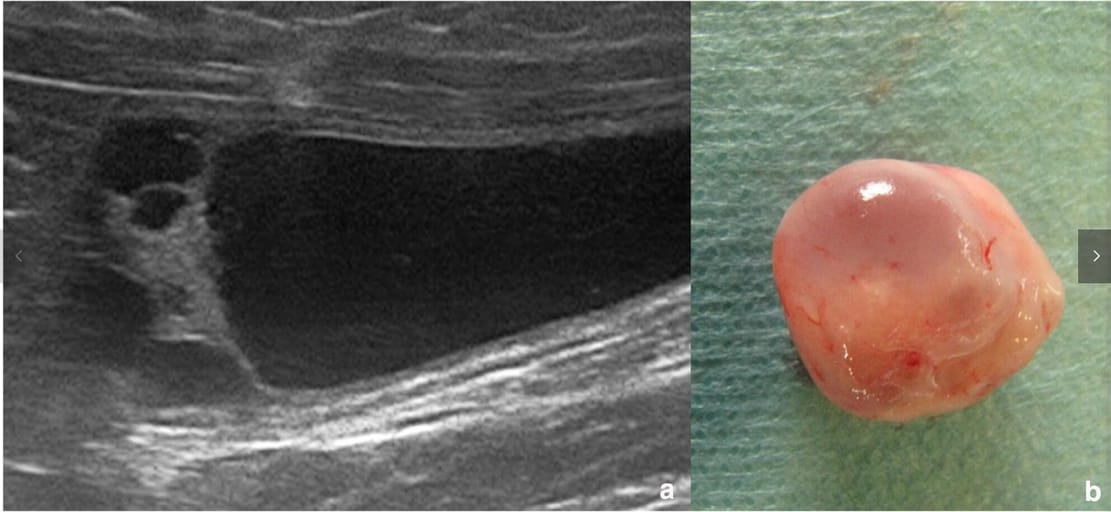- Veterinary View Box
- Posts
- Rare Bladder Lesions in Cats: A Surgical Cure You Can See on Ultrasound
Rare Bladder Lesions in Cats: A Surgical Cure You Can See on Ultrasound
Journal of Feline Medicine and Surgery Open Reports 2024
Morgane Moreau, Philippe Haudiquet, Clémence Monton, Fabien Arnault, Renaud Jossier
Background
Von Brunn’s nests are urothelial cell proliferations typically benign and found in humans and animals. When these undergo cystic or glandular transformation, they can lead to inflammatory conditions such as cystic or glandular cystitis, which are rare in cats. Prior to this report, cystic cystitis had only been described histologically in felines. This study documents the first preoperative ultrasound diagnoses of apical cystic cystitis in cats, characterized by von Brunn’s nest hyperplasia.
Methods
This case series describes two cats with recurrent lower urinary tract signs unresponsive to medical treatment. Both underwent abdominal ultrasonography which revealed multicystic bladder apex lesions. Surgical apical cystectomy was performed, followed by histopathological analysis and postoperative monitoring over two years. Antibiotic and anti-inflammatory treatments were administered before surgery and pain management was provided perioperatively.
Results
In both cases, ultrasonography showed multicystic deformities at the bladder apex. Histopathology confirmed large cystic von Brunn’s nest hyperplasia with focal glandular metaplasia. Bacteriological cultures were negative. Surgical excision led to complete resolution of clinical signs without recurrence over a 2-year follow-up. No intra- or postoperative complications were reported.
Limitations
The study is limited to two cases, which constrains the generalizability of the findings. Additionally, predisposing etiological factors could not be identified, and follow-up assessments relied primarily on clinical signs and ultrasound rather than more comprehensive diagnostic criteria. Histologic confirmation remains the gold standard as imaging and cystoscopy may be inconclusive.
Conclusions
Cystic cystitis due to von Brunn’s nest hyperplasia, although rare, should be considered in cats with recurrent lower urinary signs and apical cystic bladder lesions. Ultrasonography is a valuable diagnostic tool in these cases. Surgical excision is curative, with excellent outcomes observed. This report underscores the importance of considering this differential diagnosis and supports the role of imaging in guiding surgical intervention.

Case 1. (a) Urinary bladder longitudinal ultrasound image. Focal interruption of the continuity of the bladder mucosa was noted at the cranial pole by anechoic polycystic deformation of the bladder apex. Beside the lesion, the bladder wall appears normal. (b) Bladder apex excision
Disclaimer: The summary generated in this email was created by an AI large language model. Therefore errors may occur. Reading the article is the best way to understand the scholarly work. The figure presented here remains the property of the publisher or author and subject to the applicable copyright agreement. It is reproduced here as an educational work. If you have any questions or concerns about the work presented here, reply to this email.